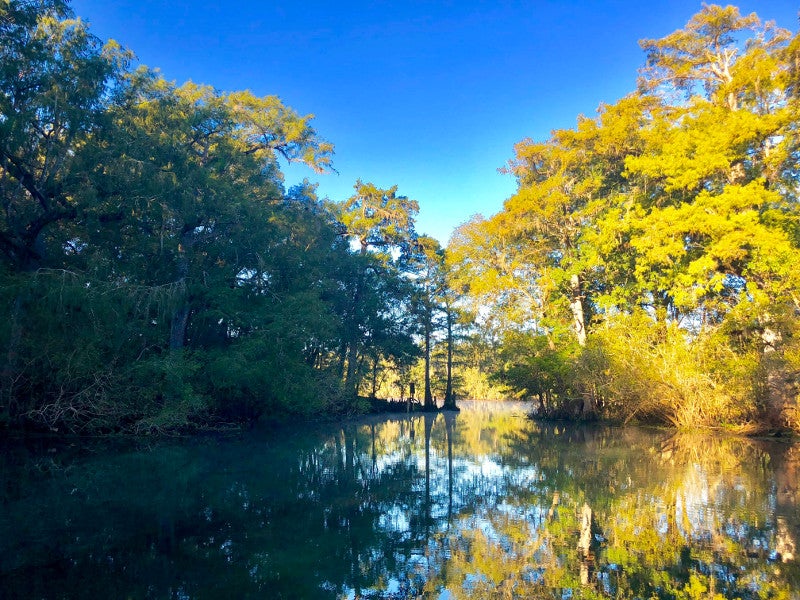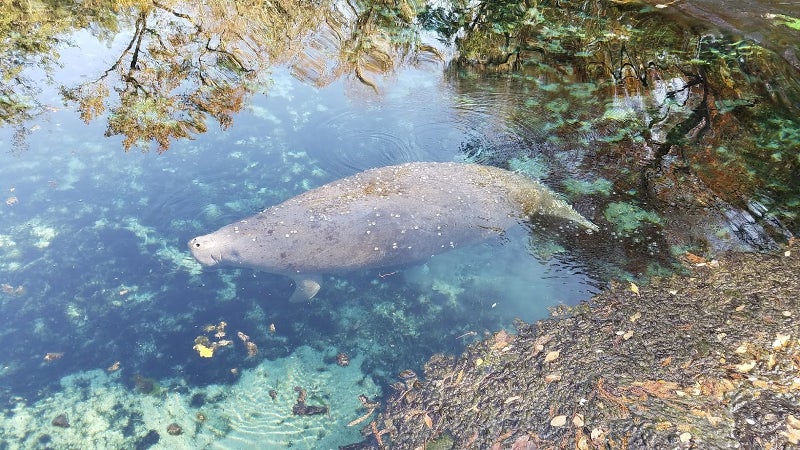
Springs of Fanning Springs

Fanning Springs State Park contains one of the 33 first-magnitude springs in the state of Florida. Producing 65 million gallons of water a day, the spring shed, combined with nearby Manatee Springs, waters an area of roughly 450 miles.
Aside from first-magnitude Fanning Spring, the park also contains Little Fanning, a second-magnitude spring. The main vent of Fanning Spring, located in the southeast portion of the headspring, is funnel-shaped and may be over 18 feet deep, depending on river levels. Here water pumps out from the underlying Floridan aquifer at a rate of 650 million gallons a day.
The Fanning Spring Run is approximately 450 feet long, 200 feet wide and estimated to be 1 to 10 feet deep. Little Fanning Spring is about 500 feet south of Fanning Spring and has a nearly horizontal opening into a previously limestone hillside. At least two separate small vents discharge at this spring. Little Fanning’s spring run, which is 10 to 40 feet wide, flows approximately 1,000 feet southwesterly to the Suwannee River.

Water within the Fanning-Manatee spring shed moves through a complex matrix of disjointed, and sometimes linked, underground passageways that may return the water to the surface through the spring vents. Exploration of major tunnels by cave divers can help us gain knowledge about the workings of these types of springs, but unlike nearby Manatee Springs no records of cave exploration exist for Fanning. This is likely because erosion and small entrances to the main spring vent have blocked entry to the system. However, researchers can and will use other tools, such as dyes released into the water, to study the flow and direction of the cave systems and where they might emerge within the spring shed.

Several threatened and imperiled species are found within the park, perhaps the most well-known being the West Indian manatee. Manatees are regularly sighted in the Suwannee River and in the spring and spring run, especially during cold weather. Manatees avoid becoming hypothermic in the cold river waters by seeking refuge in the springs, which are often warmer and more constant in temperature. The dredging of Fanning Spring Run in 2011 restored a more natural contour to the floor of the spring run by removing accumulated sediments. One goal of this project was to improve access for manatees, particularly during low water periods.

Another imperiled species that occurs within the Suwannee River adjacent to Fanning Springs is the gulf sturgeon, a federally threatened subspecies of the Atlantic sturgeon. At certain times of the year visitors can see one of the area’s most impressive natural events - the leaping of the gulf sturgeon! This prehistoric fish can reach lengths of up to 9 feet and can weigh up to 300 pounds.
The springs of this park serve many functions - as a swimming hole, place for rest and relaxation, habitat for species and as a source of water for the surrounding area. Only if we work together can we keep these unique Florida gems preserved in perpetuity.